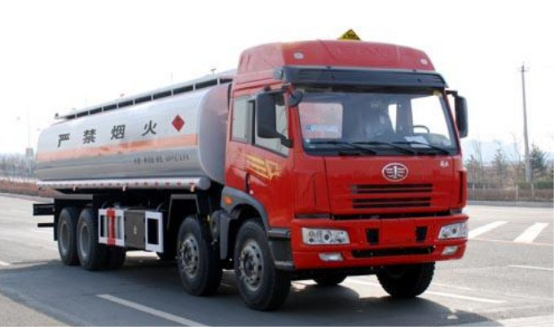Petrochemical Transport - Liquid Transporter
Petrochemical products are flammable, explosive, poisonous, and corrosive when compared to ordinary goods. How do these petrochemical liquid substances are transported? Whether it is the liquid transport required by the chemical industry or the medical liquid transport There are specialized vehicles, and the classification is also very broad. There are chemical liquid transport vehicles, cryogenic liquid transport vehicles, oil tankers, and flammable liquid vans. As long as liquid goods are not prohibited goods, any logistics company can transport them, but they can only choose Qiyun and can not be shipped. If the liquid product is a hazardous chemical, it must be a company that has the qualification to transport dangerous chemicals before it can be transported. Chemical liquid transport vehicles are used to handle corrosive and dangerous media such as acids, alkalis, and salts, that is, to transport chemical liquids that are explosive, flammable, toxic, corrosive, and radioactive, and are usually used in the chassis of second-class automobiles. Consisting of tanks and chemical pumps, it has high strength and stable center of gravity. The cryogenic liquid transporter is a special vehicle for storing and transporting cryogenic liquids. The tank is generally a double-layer structure and the sandwich is a vacuum insulation layer. For example, the LNG cryogenic transporter is a special vehicle developed specifically for transporting liquefied natural gas. The vehicle is mainly composed of two parts: a high-vacuum, multi-layer, insulated, cryogenic tank and semi-trailer frame, which is mainly used for road transport. The flammable liquid tank transporter can be installed on the cab with the chassis. The top of the compartment is closed and cannot be opened. It can be equipped with side single door, double door, double door, optional corrugated board, optional back door style and lifting tailgate. The medium for transporting individual container packaging: adhesives, coatings, feed solutions, kerosene, benzene, methanol, ethanol, acetone, toluene, xylene, etc. The oil tanker is a vehicle that transports oily materials. The tank body is generally made of sheet metal. It can also be made of FRP, plastic, etc. The interior of the tank body is provided with anti-shock plate, and the tank body attachment is provided with manholes, liquid outlet valves, etc. . The application market of liquid transport vehicles is clearly concentrated, and it is mainly applied to the transportation of liquid chemical roads in inland markets and is closely linked with the chemical logistics industry. Due to the peculiarities of petrochemical products and the ever-expanding market scale, it has provided huge market demand and development momentum for third-party logistics. In recent years, the demand growth of chemical liquids such as ethylene glycol and diethylene glycol in the domestic market has all been at 15 About %, the corresponding demand for liquid transport vehicles has also increased significantly, and we must keep up with the pace of logistics and transportation. It is believed that in the future development, with the input of science and technology and human resources, the intelligence, humanization and safety of liquefied transport vehicles will be greatly improved, reaching the international advanced level and better serving logistics and commercial transportation.
For our plastic washing recycling plant and Plastic pelletizing line,We have related Auxiliary machines like Agglomerator, vibrating sieve, Plastic Mixing Unit, Mixer Dryer,Plastic pulverizer(mill),Strand pelletizer(cutter),Screw loader, baler ect
Auxiliary Machine,Plastic Auxiliary Machinery Suzhou Beakeland Machinery Co., Ltd. , http://www.beakelandpm.com